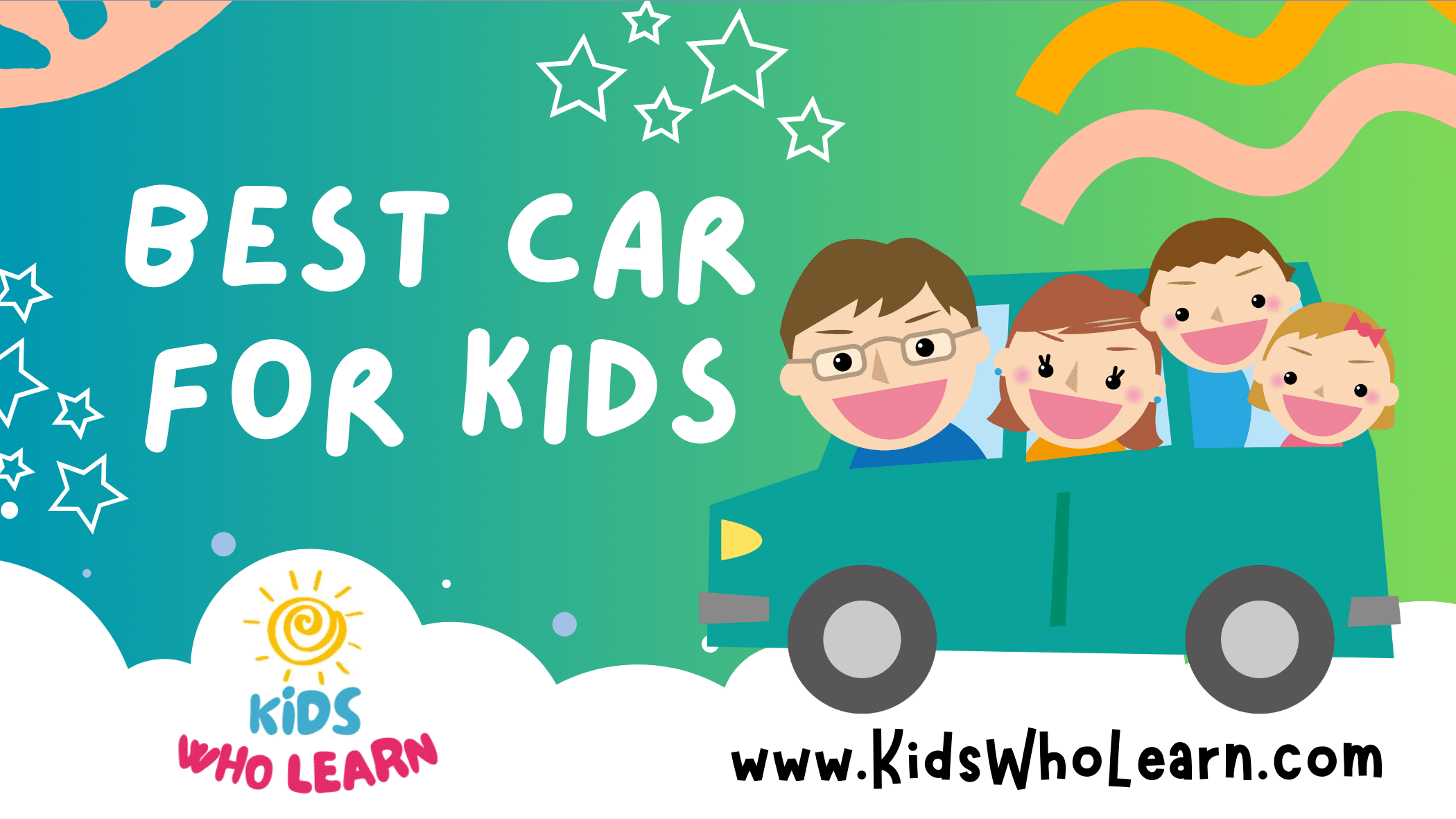Selecting the best car for kids is a notable decision that impacts their safety, enjoyment, and perhaps even their interest in driving as they grow older. When reviewing options, one must consider a variety of factors, including safety features, the design’s appeal to children, and the adaptability of the vehicle to accommodate the child’s growth. The right car can provide peace of mind for parents while being an engaging and fun tool for kids to learn and play.
In addition to safety, the integration of entertainment and connectivity options is crucial for a contemporary kids’ car experience. These features keep the young drivers engaged and can mimic real-world driving experiences. Considering power and performance is also significant, as it affects how the car operates and ensures that it remains a suitable choice as the child’s skills improve. The vehicle should strike a balance between providing an exciting experience and maintaining manageable control for a child.
Key Takeaways
- Safety and adjustable designs are top priorities in kids’ cars.
- Entertainment features enhance the driving experience for children.
- Power and performance should match a child’s growing abilities.
Evaluating Safety and Design for Kids’ Cars
When considering the best car for kids, focus on vehicles that offer advanced safety features and appropriate size and weight specifications to ensure a secure ride.
Assessing Essential Safety Features
Your child’s car should include multiple layers of protection to minimize risks in case of an accident. Ensure the car has strong safety ratings from the Insurance Institute for Highway Safety (IIHS), indicating rigorous testing and resilience. Key safety features to look for:
- Seat Belts: Adjustable seatbelts that can accommodate a growing child and can be used with booster seats if necessary.
- Headlights: LED headlights for clearer visibility during night driving.
- Traction Control: Systems that help maintain vehicle stability by controlling the amount of power sent to the wheels, essential for slippery conditions.
- Automatic Braking: Advanced collision avoidance that automatically engages the brakes when a potential impact is detected.
- LATCH System: Lower Anchors and Tethers for CHildren system should be present to securely fasten car seats without relying on seat belts alone.
Safety should be a non-negotiable feature when selecting a car for your child.
Understanding Vehicle Size and Weight Limits
The size and weight of a child’s car are important for both ease of use and safety. Smaller, lighter cars are often easier for children to navigate and handle, but they must still offer sufficient protection. Consider these points:
- Size: The vehicle should not be too large for your child to safely maneuver.
- Weight: Heavier vehicles may offer more protection in a collision, but the weight should be appropriate for the age and ability of the child driver.
Remember that appropriate car seats must be used until your child reaches the height and weight limit for using standard seat belts. Always refer to the manufacturer’s guidelines for these limits to ensure you’re adhering to the safest recommendations.
Entertainment and Connectivity Options
The right entertainment and connectivity features can significantly enhance the driving experience for your kids, keeping them engaged and content during travel.
Exploring Onboard Entertainment
Onboard entertainment options are essential for any kids’ car, and modern vehicles frequently come equipped with Bluetooth connectivity, allowing them to pair devices and play their favorite music. Most cars now include built-in speakers, and high-quality sound systems, which can support MP3 formats, ensuring your kids can listen to a variety of tunes. Some cars offer an FM radio function, alongside playful features like LED lights and a pretend radio, making the driving experience more immersive.
- Bluetooth: Wirelessly connect devices to play music.
- MP3 Player: Access a broad range of music files.
- Speakers: High-quality audio output.
- LED Lights: Fun, visual enhancement.
- Pretend Radio: Interactive feature resembling actual car radios.
Connectivity for Parents and Kids
Keeping the family connected is effortless with functionalities like Apple CarPlay and Android Auto, which mirror smartphone apps onto the car’s display, allowing for seamless integration. For straightforward physical connections, cars often incorporate an AUX input and a USB port, ensuring that your devices stay charged and connected.
- Apple CarPlay/Android Auto: Access smartphone apps on car displays.
- AUX Input: Connect external audio devices.
- USB Port: Charge devices or play audio files directly.
These integration options are designed to give you control over the entertainment environment in your child’s vehicle, providing both convenience and enjoyment.
Power and Performance Factors
When selecting an electric car for kids, understanding the vehicle’s power and performance capabilities is critical. These factors will directly influence how the car operates and its suitability for your child.
Battery Life and Recharging
Battery Life: Most electric cars for kids are equipped with a rechargeable battery. You should look for a model that offers a long-lasting battery life to maximize playtime. An ideal choice is a car with a battery that can last for at least 2 hours of continuous use, ensuring ample time for enjoyment between charges.
Recharging:
- Standard Charging: Approx. 8-12 hours for a full charge.
- Fast Charging (if available): Reduces charging time significantly, possibly to 3-4 hours.
Motor Capabilities and Speed
Motor Power: Look for electric cars with a dual motor setup if you want better performance and handling. Dual motors can provide more power and a better driving experience.
Speed Control:
- Max Speed: Usually ranges between 2 to 5 miles per hour.
- Speed Settings: Some models come with variable speed options, allowing for a low speed setting—crucial for younger or inexperienced drivers.
Remote Control: Often included for parental supervision, allowing you to control or override your child’s driving.
Weight Limitation: Pay attention to the weight limit as it affects the power and performance of the vehicle. Overloading the car can lead to decreased performance and potentially damage the motors or battery.
Selecting the Right Model for Your Child
When choosing a ride-on vehicle for your child, it’s crucial to consider both safety and the overall driving experience to ensure they have fun while staying protected.
Ride-On Cars and Trucks
Ride-on trucks like the John Deere Ground Force provide a sturdy and spacious choice for young adventurers. If you’re looking for variety, Power Wheels offer an extensive range including the rugged BBQ Fun Jeep Wrangler and the stylish Barbie Jeep Wrangler. These models come with realistic features and are designed for different age groups and terrains.
- Ford Mustang: Ideal for aspiring racers, it mimics the classic design.
- Land Rover Ride-On Car: Resembles the Land Rover Discovery, giving a sense of luxury.
- Dodge Viper SRT: Catches eyes with its sports car aesthetics.
- Mercedes-Benz 300SL: A vintage model for those who prefer classic elegance.
Each of these ride-on cars provides an individual experience based on the child’s preferences and the model’s unique characteristics.
Licensed Models and Realistic Features
Licensed ride-on cars like the Lamborghini Aventador and Mercedes-Benz 300SL offer kids a realistic driving experience. These models often include authentic badges, detailed interiors, and sometimes even brand-specific accessories.
| Model | Features |
|---|---|
| Lamborghini Aventador | Realistic engine sounds, detailed dashboard |
| Mercedes-Benz 300SL | Functional headlights, classic design |
| Ford Mustang | Soundtracks, sleek design |
| Ride-On Jeep (Various) | Durable design, suitable for rougher terrains |
Being licensed replicas, these vehicles provide a sense of realism that can inspire and excite children, fostering a more imaginative playtime. Selecting a model with these realistic features can enhance the play value and make the ride-on car or truck a memorable gift for your child.
Adjustability and Comfort in Kids’ Vehicles
When selecting a vehicle specifically designed for kids, your focus should be on models that can adapt to your child’s growth while providing a comfortable ride. Not only should the seat settings be versatile and apt for changes, but the space and materials used also play a crucial role in comfort.
Adjusting for Growth
Adjustable Seat: Look for vehicles with an adjustable seat that can move forward or backward. This adaptability ensures that as your child grows, they can still fit comfortably in their vehicle. A model that caters to varying weight capacities will also serve you for longer as it can handle the increase in your child’s weight.
- Dimensions: Pay attention to the dimensions of the car, especially the available legroom. Adequate space is necessary to accommodate rapid growth.
Comfort and Aesthetic Enhancements
Comfort: Comfort in kids’ vehicles is often synonymous with the inclusion of leather seats. They’re easier to clean and tend to last longer. Additionally, a smooth ride can partly be attributed to the vehicle’s suspension system.
- Storage & Cargo Space: Ample storage and cargo space allow for kids to bring along their toys and essentials, enhancing the overall experience.
Aesthetic Enhancements: Many kids’ vehicles come with LED lights for a fun touch. While these do not directly affect comfort, the aesthetics can make the driving experience more enjoyable for your child.
Practical Considerations for Parents
When selecting the best car for your children, consider your budget, the maintenance requirements, and the parental supervision features to ensure a choice that offers convenience and safety.
Budgeting and Long-Term Value
Cost Considerations:
- Initial Purchase: A new car like the Toyota Camry Hybrid or a Hyundai Tucson can be significant investments, with prices typically ranging from $25,000 to $35,000.
- Future Value: Models like the Honda Odyssey minivan hold their value well, often being a prudent choice for long-term value.
Family-Friendly Features:
- Vehicles with features that cater to budding farmers or young adventurers, like the Tobbi and Costzon ride-on cars, can offer a mix of entertainment and practicality, often costing between $200-$500.
Maintenance and Upkeep
Routine Maintenance Costs:
- Toyota Camry Hybrid: Known for reliable service records, reducing long-term maintenance costs. Regular servicing is generally affordable.
- Hyundai Tucson & Honda Odyssey: Common parts and service, leading to more predictable maintenance expenses.
Convenience for Parents:
- Look for low-maintenance vehicles that minimize the time and money spent on upkeep, leaving more time for family activities.
Parental Supervision Features
Parent Remote Control Options:
- Automotive Toys: Models from Tobbi and Costzon often come with a parental remote control feature, ensuring your child’s safety as they learn to navigate their toy vehicle.
In-Car Safety Measures:
- A new Honda Odyssey minivan, equipped with advanced safety features, allows for superior parental oversight during family trips, thanks to its comprehensive suite of driver-assist technologies.
Advanced Features for the Ultimate Experience
Selecting the best car for kids isn’t just about safety and durability—it’s also about integrating advanced features that elevate their driving experience. Modern electric sports cars designed for kids, like the Dakott model, combine cutting-edge technology with enhanced performance capabilities, ensuring that young adventurers can enjoy a sophisticated and thrilling ride.
High-Tech Additions
- LED Headlights: Your Dakott electric sports car comes with working LED headlights that provide bright and energy-efficient illumination for evening adventures.
- Doors: Experience the thrill of exotic cars with scissor doors that not only look impressive but are also lockable for added security.
- Dashboard: A high-tech dashboard is standard, featuring realistic interfaces that enable your kids to feel like they’re behind the wheel of a real car.
Enhancing Off-Road Performance
- Suspension: With a robust spring suspension system, your car can smoothly navigate rough terrains, ensuring comfort and stability.
- Tires: Fitted with traction tires, the vehicle is equipped to handle a variety of outdoor surfaces, providing dependable grip for those adventurous excursions.
Before purchasing, verify that your chosen vehicle comes equipped with these features to guarantee the ultimate driving experience for your kids.
Frequently Asked Questions
When choosing the best car for your kids, prioritize safety, space, and reliability. Evaluate features with the long-term use and comfort of your family in mind.
What are the top safety features to look for in a family car?
Your family car should include advanced safety features such as multiple airbags, Electronic Stability Control (ESC), and Automatic Emergency Braking (AEB). Look for high safety ratings from reputable organizations.
How do different vehicle types, like SUVs and sedans, compare for child-friendliness?
SUVs often provide more space and higher seating positions, which can improve visibility. Sedans typically offer better fuel efficiency and are easier to navigate in tight spaces. Examine your family’s needs to determine the best fit.
Which family vehicles offer the best balance of space and comfort for larger families?
Minivans and three-row SUVs are ideal for larger families due to their abundant seating arrangements and ample cargo space. Models like the Honda Odyssey and Toyota Highlander rate highly for family-friendly features.
What are the most reliable car models suitable for families with children?
Look for models with strong reliability records, such as the Subaru Forester and Toyota Camry. These vehicles often have lower maintenance costs and offer long-term dependability.
How important is fuel efficiency when choosing a vehicle for a family of 5 or more?
Fuel efficiency is crucial as it impacts long-term costs and travel range. Vehicles like the Toyota Sienna Hybrid provide excellent fuel economy without sacrificing space, making them ideal for larger families.
What advanced driver-assistance systems should I consider for enhanced child safety in a car?
Consider vehicles with systems like Lane Keeping Assist, Adaptive Cruise Control, and Rear Cross-Traffic Alert. These features can help prevent accidents and keep everyone safer on the road.














